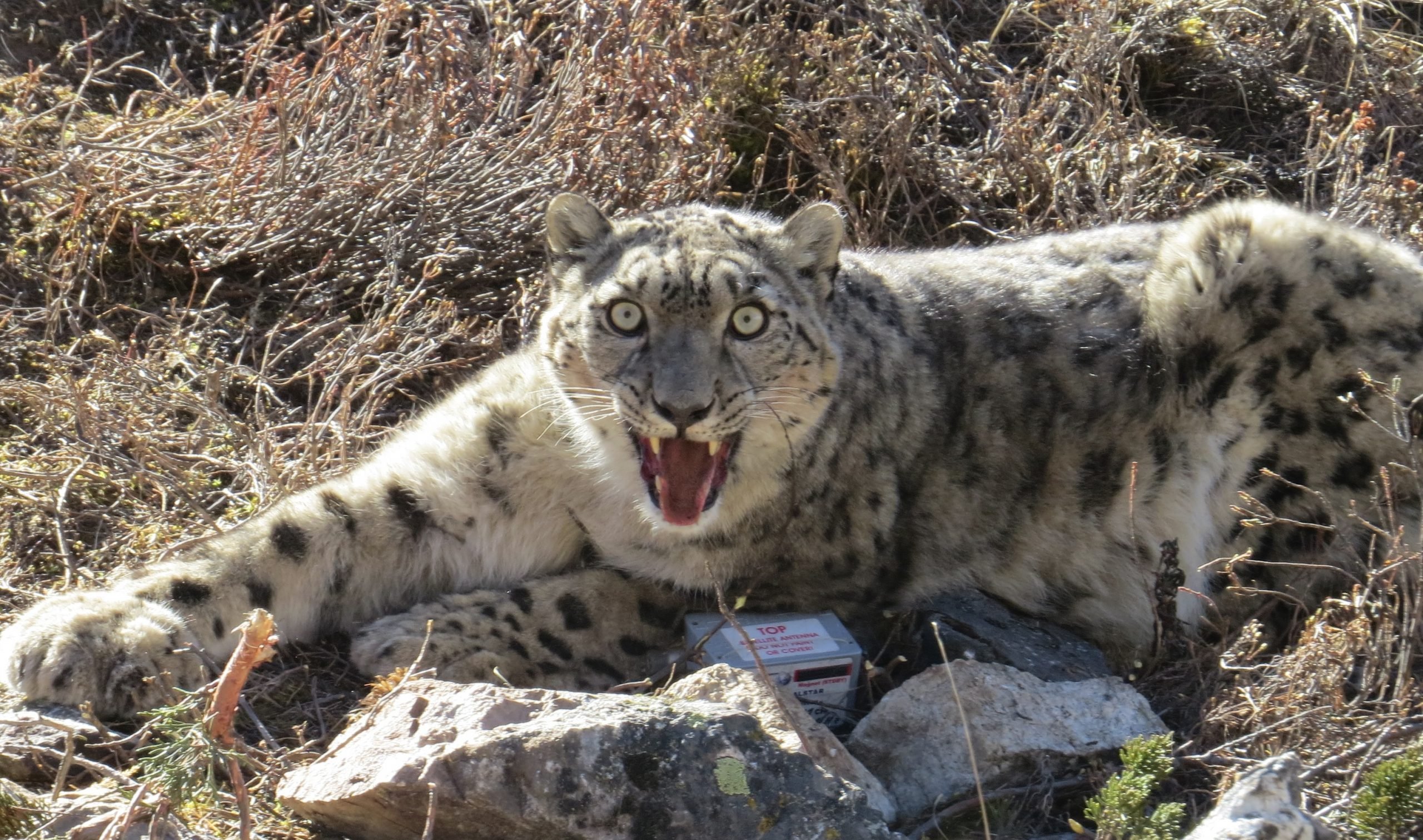Nepali scientists are using satellite GPS technology to track the movements of the elusive snow leopard—one of the most endangered species in the Himalayas— in the high-altitude, inaccessible region on the Nepal-China border.
On November 25, scientists captured and collared an adult snow leopard in the remote Kanchenjunga Conservation Area — the only community-managed conservation area in the eastern Himalayan region of Nepal. Dr. Maheshwar Dhakal, an ecologist at Nepal’s Department of National Parks and Wildlife Conservation involved in the project said: “We receive information about its location along with activity and temperature data every four hours through emails and SMS messages in Kathmandu.”
The snow leopard, named Ghanjenzunga after a local deity, will be monitored over the next two years. There are plans to fit radio collars on another three leopards in 2014.
There are an estimated 6,000 snow leopards in the wild across 12 countries in Asia, after numbers are declining because of hunting and habitat loss. According to the scientists, the tagged leopard has covered an area of 80 square kilometres in last three weeks and is particularly active at dawn and dusk, which is considered normal behaviour for the animal.
“Research on endangered species in remote high altitude regions in itself is very challenging but we hope to receive lots of information about this species through this research which is the first project of its kind in Nepal,” said Dr. Ghanashyam Gurung, conservation director at the World Wildlife Fund’s Nepal office.
About half of the global population of snow leopards are found in three countries —China (2000-2500) Nepal (300-500) and India (200-600), so authorities in Nepal are discussing the possibility of trans-boundary research projects. “We have been working very closely with Indian authorities and just few months ago we had discussions with the Chinese government to carry out joint research on this species as it is of global importance,” added Dr. Dhakal of the National Parks Department of Nepal.
At a high level summit on the snow leopard held in Bishkek, the capital of the Kyrgyz Republic last October, leaders from countries with snow leopard populations pledged to increase efforts to boost scientific research and monitoring. “More research… will ultimately lead to better planning and policy formulation to save one of the endangered species of global importance,” said Megh Bahadur Pandey, director general of National Parks Department. Researchers are also hoping to find some clues about the impact of climate change on wildlife in the high altitude region. “This research may also help us to understand real impacts of climate change on wildlife as weather-related data will also be acquired through this technology,” added Dr. Dhakal from the National Parks Department.
Photo: WWF Nepal/ Department of National Parks and Wildlife Conservation

